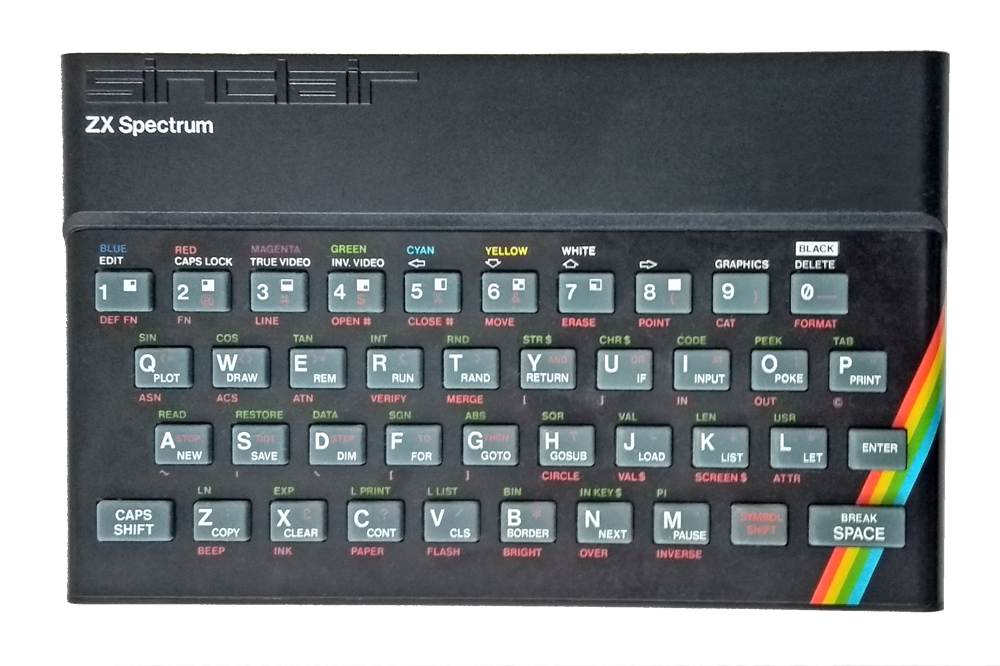|
||||||||||||||||||||||||||||||||||
Sincair ZX Spectrum
History There are very resourceful tinkerers like Steve Wozniak who built computers on their own, but Clive Sinclair stands out among all of them. At the beginning of 1962 he had already published 13 books for hobby electronics engineers, and he remained active as an author until 1969. In the meantime he founded his own company "Sinclair Radionics" in 1961 and produced HiFi devices. In 1972, the latter brought a pocket calculator "Executive" to the market, which, in contrast to competing products, could be much smaller because it used hearing aid batteries. It continued with a digital multimeter (1973), digital watches (1975), and a pocket television (1977). ZX80/81 Then in January 1980, Clive Sinclair presented the ZX 80 (£99), prompting Jack Tramiel of Commodore to develop and launch the VIC-20. This used the Z80 processor for a Z80 special feature, to display the image and thus save a graphics chip. Therefore during computer calculations the screen was switched off for this time. A short time later the improved ZX81 (69£) with ULA chip followed. The ULA chip ensured a continuous image output and was no longer interrupted by computer calculations. ZX Spectrum The first serious home computer was launched by Clive Sinclair in April 1982, even before the C64 (which was not produced until the 2nd half of 1982). The special thing about the computer was its low price with only 125£ (16KB model). The 48KB model cost 179£. For the C64 you had to pay $600 when it was introduced. Therefore it is not surprising why the inexpensive ZX Spectrum in different variants sold about 5 million times (about twice as often as the Atari XL). The last Spectrum left the production line in 1992. |
||||||||||||||||||||||||||||||||||

